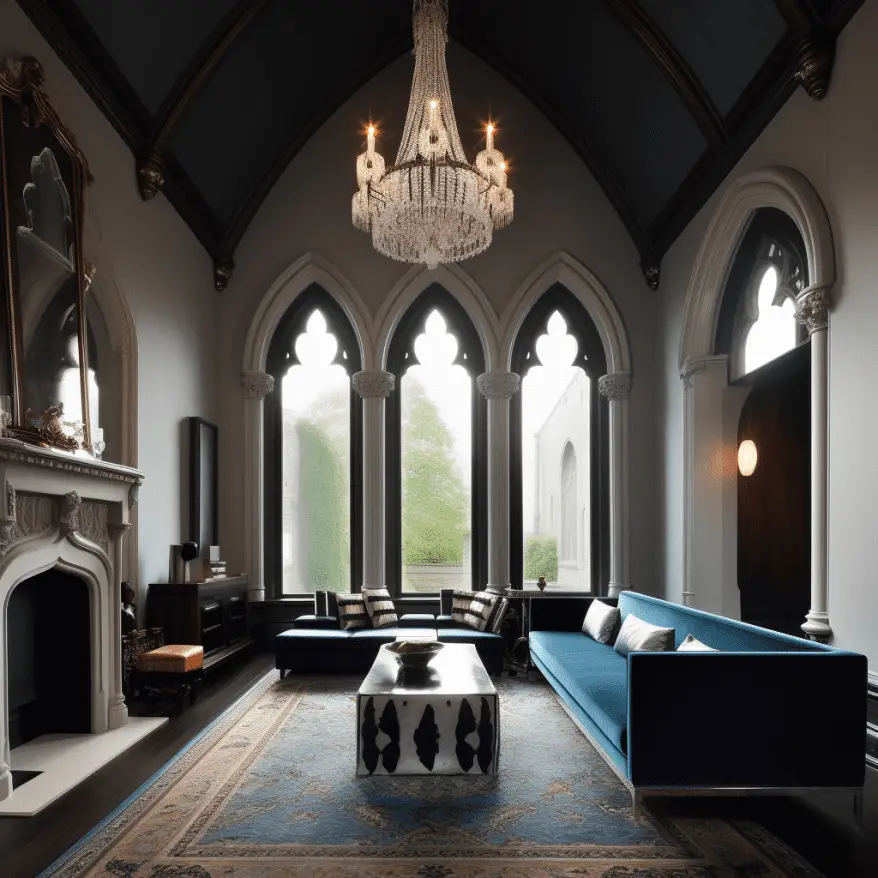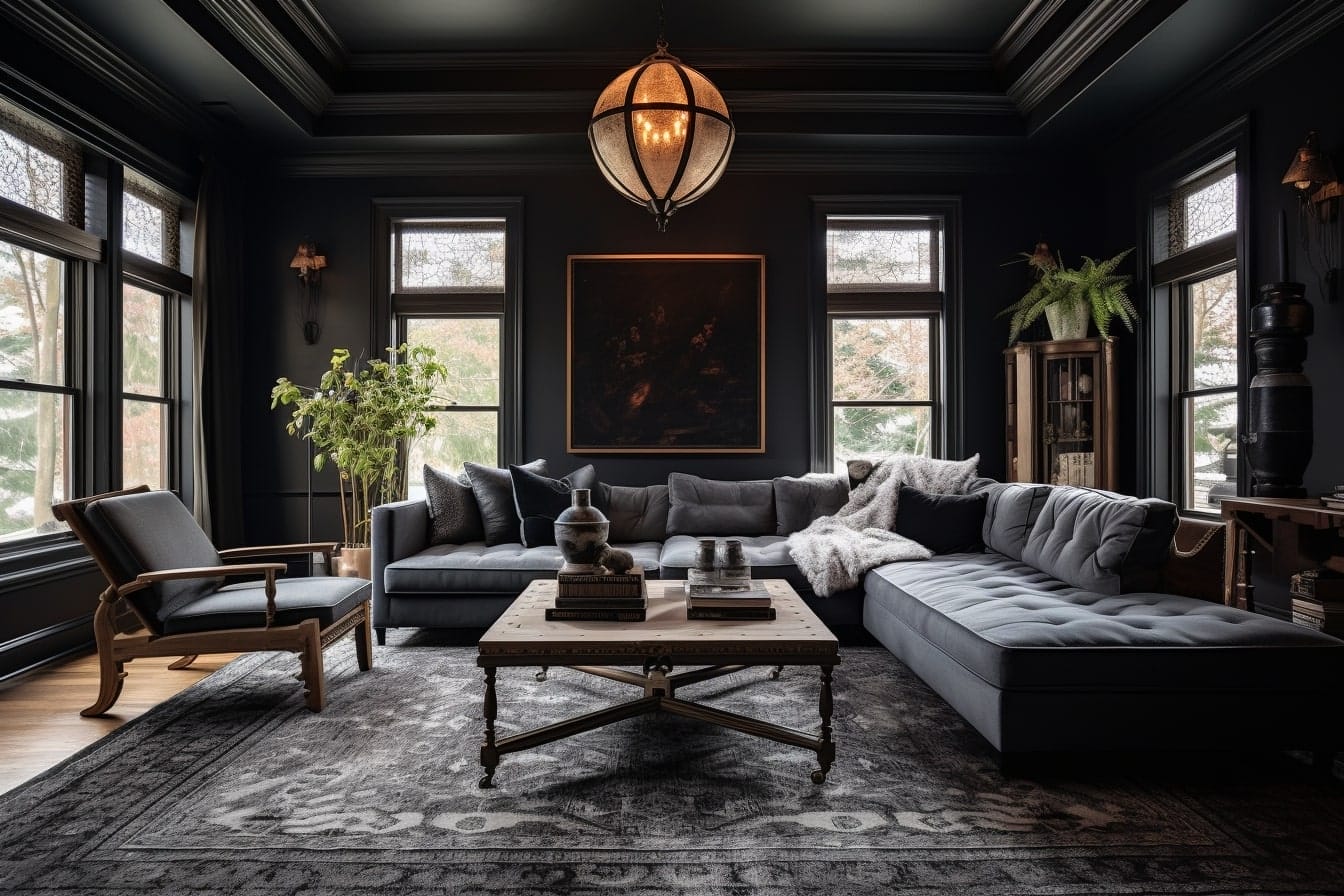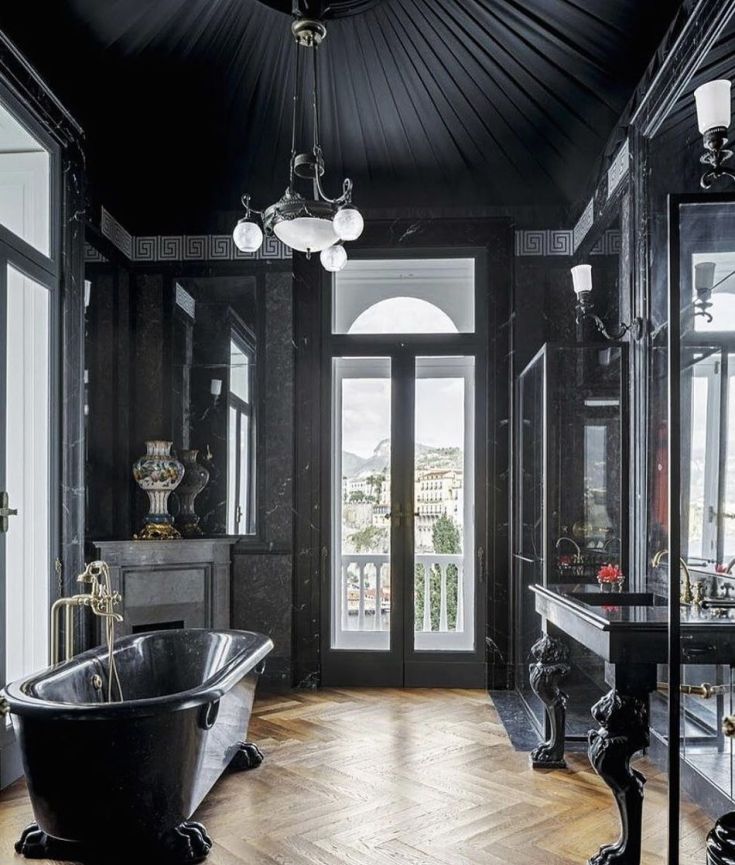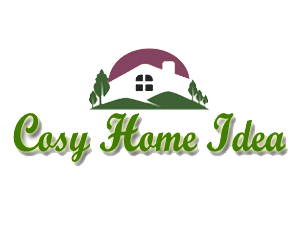Gothic style interior design captivates with its dramatic and mysterious charm. This design trend combines elegance and dark beauty.
Impressed by the majesty of Gothic architecture? Perhaps what you need is Gothic style interior design. This style, dating back to medieval times, includes elements such as pointed arches, intricate patterns, and rich colors. Just envision an apartment ceiling as high as that of a cathedral, replete with ornate detailing and the touch of historical elegance.
This appeal can be made further with dark woods, deep colors, and antique furniture. A little Gothic would transform a place uniquely, from ultramodern apartments to ultraprotected heritage houses. One gets fascinated, coming into a Gothic atmosphere within your own interiors-a masterpiece to stay through time.
Introduction To Gothic Style Interior Design
The Gothic style is a dramatic and timeless design choice. Known for its dark colors and intricate details, this style brings a unique, mystical atmosphere to any space. Let’s explore the origins and key elements of Gothic style interior design.
Historical Background
The Gothic style emerged in the 12th century and thereafter swept over the greater part of Europe. It originated first in cathedrals and churches. Some of the major characteristics of the Gothic style are pointed arches, ribbed vaults, and flying buttresses. These were other than aesthetic features but also structural ones that gave buildings the capacity to soar upwards.
By the 19th century, the Gothic Revival movement had translated this style into homes. From there, it became a statement of romance and nostalgia. Gothic style is an appreciation for eloquence and historical charm.
Key Elements
The Gothic style has several distinctive features. Here are the key elements:
- Dark Colors: Rich, dark hues like black, deep red, and purple dominate.
- Intricate Details: Carvings, ornate patterns, and elaborate designs.
- Stained Glass: Colorful windows that add light and color.
- Pointed Arches: These arches are a hallmark of Gothic architecture.
- Large Windows: Often filled with stained glass, they add grandeur.
- Heavy Fabrics: Velvet, brocade, and damask fabrics are common.
Using these elements, you can create a space that feels both historical and enchanting.
| Element | Description |
|---|---|
| Dark Colors | Rich, deep hues like black and purple |
| Intricate Details | Elaborate carvings and patterns |
| Stained Glass | Colorful, decorative windows |
| Pointed Arches | Iconic arches in architecture |
| Large Windows | Windows that add grandeur |
| Heavy Fabrics | Velvet and brocade fabrics |
Incorporate these elements to embrace the Gothic style. Your space will transform into a captivating, historical haven.
Architectural Features
Gothic style interior design is known for its stunning architectural features. These elements create a unique and dramatic atmosphere. The most notable features include pointed arches and ribbed vaults. These designs add both beauty and structure to Gothic interiors.
Pointed Arches
Pointed arches are a defining characteristic of Gothic architecture. They are taller and more elegant than rounded arches. This design allows for higher ceilings and larger windows. It creates a sense of verticality and grandeur.
In interiors, pointed arches can be seen in doorways and windows. They often feature intricate tracery and stained glass. These details enhance the overall aesthetic. Pointed arches also distribute weight more efficiently. This allows for thinner walls and more open spaces.
Ribbed Vaults
Ribbed vaults are another key feature. They are used to support ceilings in Gothic buildings. These vaults consist of intersecting arches, creating a rib-like structure. This design allows for a lighter and more flexible ceiling.
Ribbed vaults are not only functional but also decorative. They often feature elaborate carvings and patterns. This adds a touch of artistry to the structure. The ribs also help to draw the eye upward. This enhances the sense of height and space in the room.
In modern Gothic interiors, ribbed vaults can be recreated using various materials. This allows for the integration of this classic feature in contemporary homes.
Furniture And Decor
The Gothic style interior design is characterized by its unique and striking furniture and decor. Every piece tells a story and adds a touch of mystery and elegance to your space. Let’s explore some key elements that define this style.
Antique Pieces
Antique pieces are a cornerstone of Gothic style. These items often feature dark, rich woods like oak or mahogany. Their aged look adds historical depth. Consider adding:
- Large wooden cabinets
- Grand armoires
- Ornate chests
These pieces not only serve a functional purpose but also act as statement pieces in your decor. They often come with detailed craftsmanship that showcases their historical significance.
Intricate Carvings
Intricate carvings are another hallmark of Gothic furniture. These carvings often depict floral patterns, mythical creatures, or geometric designs. Look for:
- Carved wooden chairs
- Detailed headboards
- Elaborate table legs
Such carvings add a layer of complexity and beauty to the furniture. They provide a visual feast for the eyes and contribute to the overall Gothic ambiance.
Incorporating antique pieces and intricate carvings can transform your space. Gothic style interior design is about creating a dramatic and historical atmosphere. Choose pieces that speak to you and enhance the room’s character.

Credit: axxla.com
Color Palette
The color palette is the heart of interior design in the Gothic style, dictating the mood and atmosphere of this dramatic and mysterious style. Rich hues and dark tones are characteristic of Gothic interiors, which add depth and an air of sophistication to any space. In this section, we look at the key elements that compose a Gothic color palette, with the main focus on rich hues and dark tones.
Rich Hues
Gothic interiors thrive on rich, deep colors. These hues add an opulent touch to the design. Think of deep reds, royal purples, and lush emerald greens. These colors create a sense of luxury and grandeur. They also evoke a historical feel, reminiscent of ancient castles and cathedrals.
Here are some popular rich hues in Gothic design:
- Crimson Red: Symbolizes passion and power.
- Royal Purple: Conveys royalty and mystery.
- Emerald Green: Adds a touch of nature and opulence.
- Midnight Blue: Brings calmness and depth.
Dark Tones
Dark tones are essential in Gothic interiors. They create a dramatic and moody atmosphere. Black is a staple color in Gothic design. It adds elegance and a sense of mystery. Combining black with other dark tones can enhance the overall effect.
Some common dark tones used in Gothic design are:
- Charcoal Gray: Provides a soft, sophisticated touch.
- Ebony Black: Adds depth and intensity.
- Deep Brown: Evokes a sense of warmth and earthiness.
- Dark Burgundy: Combines richness with a hint of drama.
Combining rich hues and dark tones creates a balanced Gothic interior. The result is a space that feels both luxurious and inviting. Remember, the key is to blend these colors seamlessly. This creates a cohesive and enchanting atmosphere.
Credit: https://www.youtube.com
Textiles And Fabrics
Outwardly, it would appear that textiles and fabrics play a big role in interior gothic style. They add such texture and depth, along with a feeling of drama to any given room. Rich textiles include velvet and brocade; heavy drapes and curtains also form a component. Such fabrics create an atmosphere of luxuriousness and mystery.
Velvet And Brocade
Velvet is a classic choice in Gothic interiors. It feels soft and looks opulent. This fabric is perfect for upholstery, cushions, and throws. Deep colors like burgundy, emerald green, and midnight blue work best. Brocade is another fabric that adds elegance and intricacy. It often features elaborate patterns, adding visual interest. Use brocade for bedspreads, wall hangings, and upholstery.
Draperies And Curtains
Draperies and curtains complete the Gothic look. They should be heavy and dramatic. Velvet or brocade drapes are ideal. Floor-to-ceiling curtains in dark shades block light and create a moody ambiance. Layering curtains adds depth and texture. Tassels and fringe can enhance the Gothic feel. Tiebacks with ornate designs also add to the effect.
Lighting
Lighting plays a vital role in Gothic style interior design. It sets the mood and enhances the dramatic atmosphere. The right lighting fixtures bring out the intricate details and dark elegance of Gothic spaces.
Chandeliers
Chandeliers are a staple in Gothic interiors and can also be a fantastic addition to Cozy Interior Design Ideas. They add grandeur and sophistication. Look for chandeliers with dark metal finishes and intricate designs. Gothic chandeliers often feature candle-like bulbs, giving an authentic medieval feel. Crystal accents can add a touch of opulence. Hang the chandelier in the center of the room to serve as a focal point and elevate the space.
Candelabras
Candelabras are another iconic Gothic lighting choice. They provide a sense of mystery and romance. Choose candelabras with wrought iron or brass finishes. The more ornate, the better. Place them on mantels, tables, or even as floor stands. They create a soft, flickering light that enhances the Gothic ambiance. Use real candles for an authentic touch. Battery-operated candles can be a safer alternative.
Accessories
Accessories in Gothic style interior design can transform a space. They add drama, elegance, and a touch of mystery. From mirrors to Gothic art, these elements create a unique atmosphere. Let’s explore some key accessories to enhance your Gothic interior.
Mirrors
Mirrors are another focal point of Gothic interiors, while they also spread the light and give a feel of depth. Use heavy-framed mirrors with dark-colored ornamentation. Seek out those with lots of details and patterns. A large mirror can be the centerpiece of a room, while smaller ones lead the eye to focal points within the room. Position them well, and let them add to the ambiance of the room.
Gothic Art
Gothic art brings history and culture into your home. Look for pieces that feature dark colors and dramatic scenes. Paintings of medieval castles, knights, and mythical creatures are ideal. Sculptures and tapestries can also add a Gothic touch. Hang artwork on walls to create a gallery-like feel. Ensure the pieces complement the overall color scheme and style.
Creating Ambiance
Gothic style interior design is all about creating an immersive and captivating atmosphere. The right ambiance can transform a space, making it feel mystical, elegant, and dramatic. Let’s explore how to achieve this captivating look.
Mystical Atmosphere
To create a mystical atmosphere in your Gothic-inspired space, focus on lighting. Use dim, warm lights. Candles and chandeliers add a soft, eerie glow. Heavy drapes and dark walls enhance the mystery.
Incorporate rich colors like deep purples, reds, and blacks. These shades evoke a sense of mystery and allure. Add texture with velvet, silk, and brocade fabrics. They contribute to the luxurious and mystical feel.
Decorate with antique pieces and Gothic motifs. Items like gargoyles, wrought iron fixtures, and stained glass windows bring the style to life. These elements add historical depth and intrigue.
Elegance And Drama
Gothic design is synonymous with elegance and drama. To achieve this, start with furniture. Choose pieces with intricate carvings and dark wood finishes. Victorian-style furniture fits perfectly.
Use luxurious materials like leather and velvet. These fabrics add a touch of opulence. A grand canopy bed or a statement chair can serve as focal points.
Accessorize with dramatic elements. Heavy, ornate mirrors and large, framed artwork add sophistication. Metal accents in gold or brass enhance the elegance.
Consider a bold, patterned wallpaper. Damask or floral designs in rich colors add to the dramatic effect. These patterns create visual interest and depth.
For a final touch, add some Gothic-inspired décor. Candelabras, skulls, and antique books can complete the look. These details tie the whole ambiance together.
| Element | Purpose | Examples |
|---|---|---|
| Lighting | Create a mystical glow | Candles, Chandeliers |
| Colors | Evoke mystery | Deep purples, Reds, Blacks |
| Fabrics | Add texture and luxury | Velvet, Silk, Brocade |
| Furniture | Enhance elegance | Victorian-style, Intricate carvings |
| Décor | Add drama | Mirrors, Artwork, Candelabras |
Modern Gothic Fusion
Modern Gothic Fusion blends dark, dramatic elements with contemporary design. This style creates a unique, sophisticated interior. It combines old-world charm with modern aesthetics.
Contemporary Touches
Modern Gothic Fusion includes sleek, minimalistic furniture. It often features bold, geometric shapes. Combining these with classic Gothic elements creates a striking contrast. For example, a simple, black leather sofa pairs well with an ornate, Gothic mirror.
Another contemporary touch is the use of modern lighting. Think of chandeliers with a modern twist or sleek floor lamps. These elements add a touch of elegance and mystery to the space.
| Element | Gothic Feature | Modern Twist |
|---|---|---|
| Furniture | Heavy, carved wood | Sleek, geometric shapes |
| Lighting | Ornate chandeliers | Modern, sleek designs |
Balancing Old And New
Achieving balance is key in Modern Gothic Fusion. It’s important to mix old and new elements evenly. Too many Gothic elements can make a space feel heavy. Too many modern elements can lose the Gothic charm.
Start with a neutral base, like gray or black walls. Add Gothic details, such as wrought iron accents or velvet drapes. Then, introduce modern pieces, like a glass coffee table or a minimalist bookshelf.
- Neutral base colors
- Gothic details
- Modern furniture
Layering these elements creates a cohesive look. It ensures the space feels both timeless and current.
In Modern Gothic Fusion, every piece has a purpose. Each element should contribute to the overall aesthetic. This balance creates a space that feels both dramatic and inviting.

Credit: www.decorilla.com

Credit: www.vinterior.co
Frequently Asked Questions
What Is Gothic Interior Design?
Gothic interior design is characterized by dark colors, intricate patterns, and dramatic, medieval-inspired elements. It often includes features like pointed arches, stained glass, and ornate furniture.
How To Achieve A Gothic Look At Home?
To achieve a Gothic look, use dark colors, rich fabrics, and antique furniture. Incorporate elements like wrought iron, chandeliers, and detailed woodwork.
What Colors Are Used In Gothic Interiors?
Gothic interiors often use deep colors like black, dark purple, burgundy, and navy. These colors create a dramatic and moody atmosphere.
Are Gothic Interiors Expensive To Create?
Gothic interiors can be expensive due to the use of high-quality materials and antique furniture. However, you can achieve a similar look on a budget with DIY projects and thrifted items.
Conclusion
Gothic style interior design brings timeless elegance to any space. Dark colors, ornate furniture, and intricate patterns create a captivating atmosphere. This design style blends history with modern touches, making rooms feel unique and inviting. Explore Gothic elements to add drama and sophistication to your home.
Remember, balance is key. Too much can overwhelm, while the right amount enchants. Start with small pieces and gradually build your Gothic haven. Let your creativity flow and transform your space with Gothic charm.



